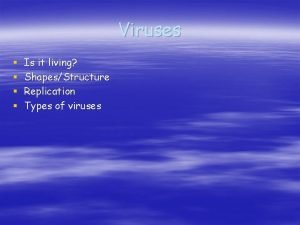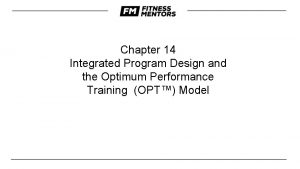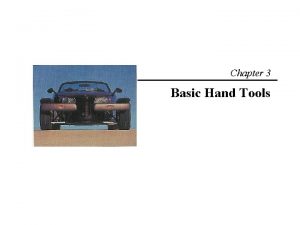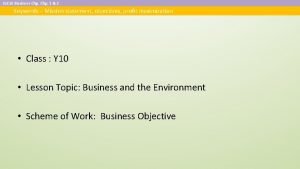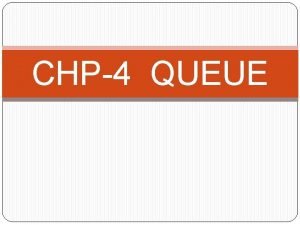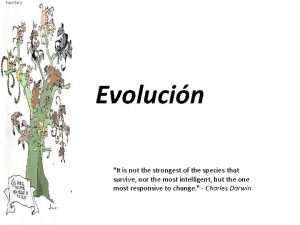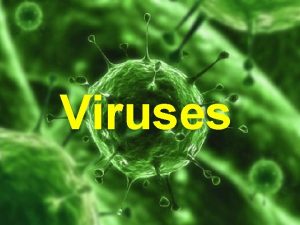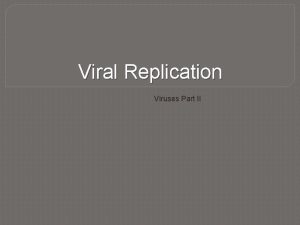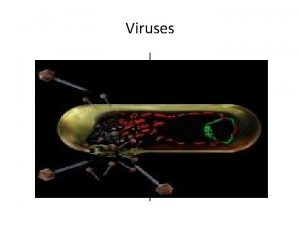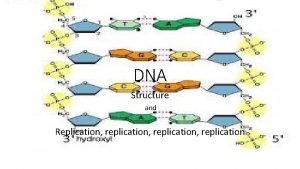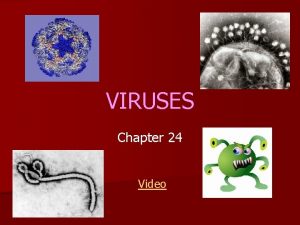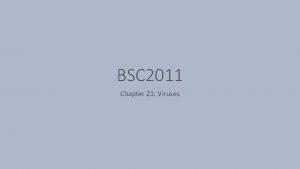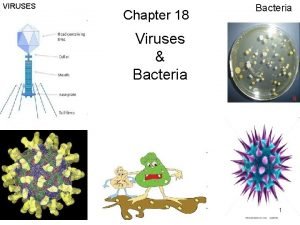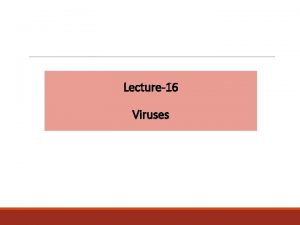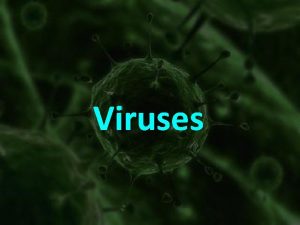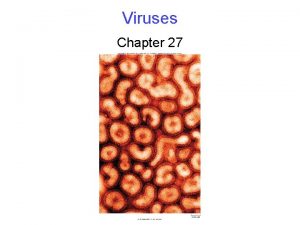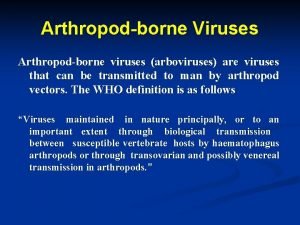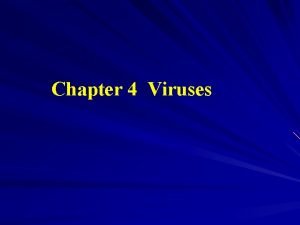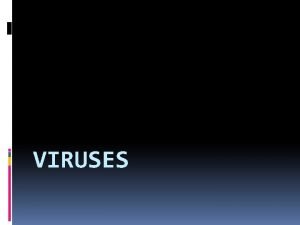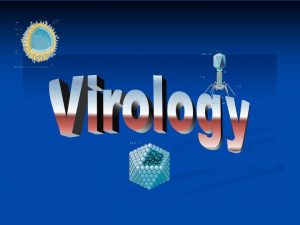Viruses Chp 24 Viral Structure Replication Viral Structure

















- Slides: 17

Viruses Chp. 24 Viral Structure & Replication

Viral Structure n Virus—tiny, non living particle made up of nucleic acid and a protein coat v. Nucleic acid can be DNA or RNA n Protein coat is also known as the capsid n Some have an envelope that surrounds the capsid n Vary in size and shape



Why non-living? n Do not move, grow, respire or carry out metabolism n Must reproduce inside a host cell n Have no cytoplasm or organelles

Some traits of being alive? n Have DNA or RNA v. Can evolve n Can reproduce n Respond to environment

VIRAL REPLICATION n Viruses can only reproduce inside a host cell v. Outside of host they are lifeless with no control over movement Ø Spread by air, water, food, body fluids

VIRAL REPLICATION n Viruses recognize and will attach only to a specific host cell v. Polio to nerve cells n Proteins on the surface of virus match receptors on the host cell v“lock & key” fit n Viral infection is specific

VIRAL REPLICATION n Follow one of two possible cycles v. LYTIC CYCLE Ø Immediately destroys cells Ø Viruses use this cycle called virulent v. LYSOGENIC CYCLE Ø Does not immediately destroy cells Ø Viruses use this cycle called

Lytic Cycle 1. Attachment—Virus attaches to host cell 2. Entry—injects nucleic acid into host 3. Replication—Viral DNA starts replicating and “hijacks” the protein synthesis machinery

Lytic Cycle 4. Assembly—cell is forced to make virus parts and put them together 5. Lysis—cell bursts & releases new viruses


Lysogenic Cycle n Allows a virus to hide in host cells for days, months or years 1. Attachment & Entry of nucleic acid 2. Prophage Formation--Viral DNA integrates into the host cell’s DNA forming a prophage 3. Cell Division—every time the cell divides the prophage goes with it!

Lysogenic Cycle Each new daughter cell has the prophage in it 4. Enters Lytic Cycle ü At any point the prophage can “pop out” of the host’s chromosome and enter into the lytic cycle v

Change provirus to prophage


 Unlike lytic viruses, lysogenic viruses do not
Unlike lytic viruses, lysogenic viruses do not Watch?v=dhlvcdeg0yg
Watch?v=dhlvcdeg0yg Section 24-1 viral structure and replication
Section 24-1 viral structure and replication Replication of viruses
Replication of viruses Bioflix activity dna replication nucleotide pairing
Bioflix activity dna replication nucleotide pairing California bit program
California bit program Hardvarf
Hardvarf Chp
Chp Opt model phases
Opt model phases Matthew chap 5
Matthew chap 5 Basic tools and basic hand operations
Basic tools and basic hand operations Chp mission statement
Chp mission statement Chp 4
Chp 4 Chp 14
Chp 14 Decp
Decp Seleccion estabilizadora
Seleccion estabilizadora Checed warwick apartments
Checed warwick apartments Why are viruses considered nonliving?
Why are viruses considered nonliving?



